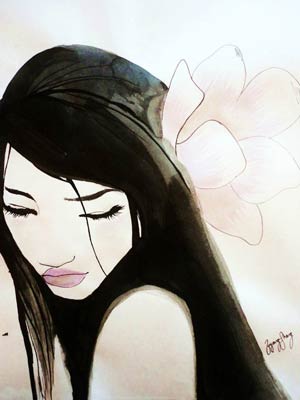All Nonfiction
- Bullying
- Books
- Academic
- Author Interviews
- Celebrity interviews
- College Articles
- College Essays
- Educator of the Year
- Heroes
- Interviews
- Memoir
- Personal Experience
- Sports
- Travel & Culture
All Opinions
- Bullying
- Current Events / Politics
- Discrimination
- Drugs / Alcohol / Smoking
- Entertainment / Celebrities
- Environment
- Love / Relationships
- Movies / Music / TV
- Pop Culture / Trends
- School / College
- Social Issues / Civics
- Spirituality / Religion
- Sports / Hobbies
All Hot Topics
- Bullying
- Community Service
- Environment
- Health
- Letters to the Editor
- Pride & Prejudice
- What Matters
- Back
Summer Guide
- Program Links
- Program Reviews
- Back
College Guide
- College Links
- College Reviews
- College Essays
- College Articles
- Back
,Asian American Pacific Heritage Month
As an Asian American girl who grew up devouring the American Girl series, “Poison Ivy” has a special place in my heart. An athletic, yet diligent, Chinese American gymnast living in the midst of a social revolution in the 70s, Ivy Ling was first introduced to me when I was seven as Julie Albright’s soulmate and partner in crime from Megan McDonald’s “Meet Julie” series.
From the start of the series, I instantly felt connected with Ivy. While we both were Chinese, embraced long hair and almond-shaped eyes, and shared two annoying siblings, Ivy immediately stood out to me as this fun-loving, culture embracing school girl that I wished to be. Prior to meeting Ivy, I was very self-conscious of my Asian American heritage. Growing up in an upper-middle-class Caucasian neighborhood, I attended a wealthy public school where teachers and students had little knowledge or appreciation about ethnic diversity. Bringing chopsticks to lunch was like bringing a frog to dinner, even worse was the actual lunch itself. I swear this is no exaggeration, but I don’t think there has been a single week during elementary school when someone didn’t question or ridicule the fried rice my mom packed. While I was constantly asked about my lunch, Ivy’s friends didn’t seem to complain about her food, rather they devoured it with no regrets.
While I actively admired Ivy’s supportive community, the fact that she embraced her athletic side, and actively intertwined pieces of Chinese and American customs, instead of placing a laser beam focus on academics had me struck me hard, because I’ve struggled to embrace my passions. Ever since I could hold a pencil in one hand and paper in the other, I’ve learned to love many forms of art--photography, cooking, painting, drawing. However, over the course of m childhood, my dedication has been sporadic, ultimately giving up on some of them, because I always felt discouraged by my peers. For most of my life, I’ve felt pressured to live up to the model minority stereotype. I, who have rarely been called “smart”, have always been scared to embrace my artistic and creative side. However, it wasn’t until recently when I was tired of hiding my passions when I stripped all those nasty, counterfeit, and hasty stereotypes away from me. To me, Ivy has a special place in my heart. Not only is it because she was the first Asian American to be featured in American girl, but because she lived life the way almost all Asian American girls wanted to live: a life where race and stereotypes didn’t burden your passions and dreams.
Every May is Asian American Pacific Heritage month, a month dedicated to the millions of past, present, and future Asian Americans who have is and will enrich US history. As an Asian American who has struggled with her identity for years, I am proud to say that I am Asian American, artistic, creative, not stem oriented, not part of the model minority, and eager to embrace my passion.

Similar Articles
JOIN THE DISCUSSION
This article has 0 comments.

#asianamericanrepresentation